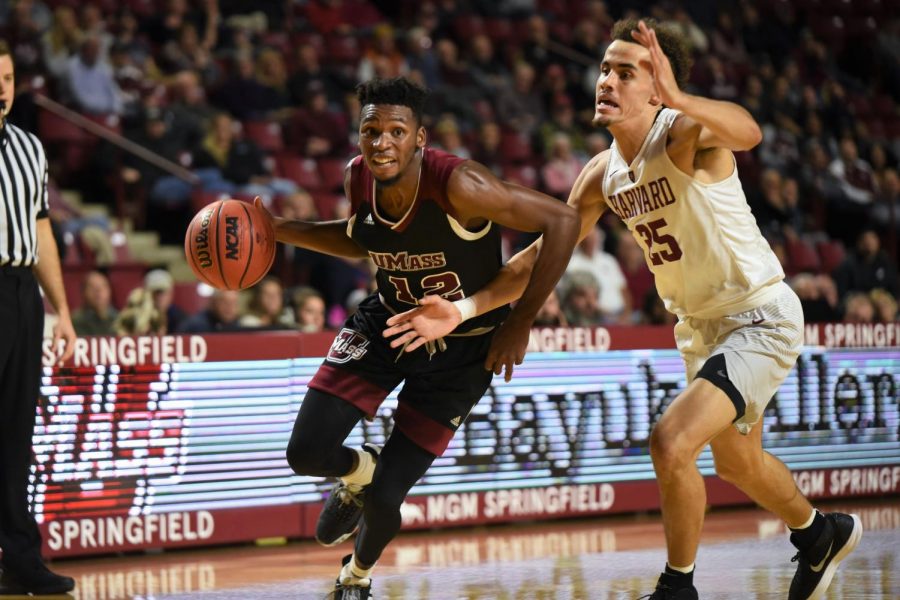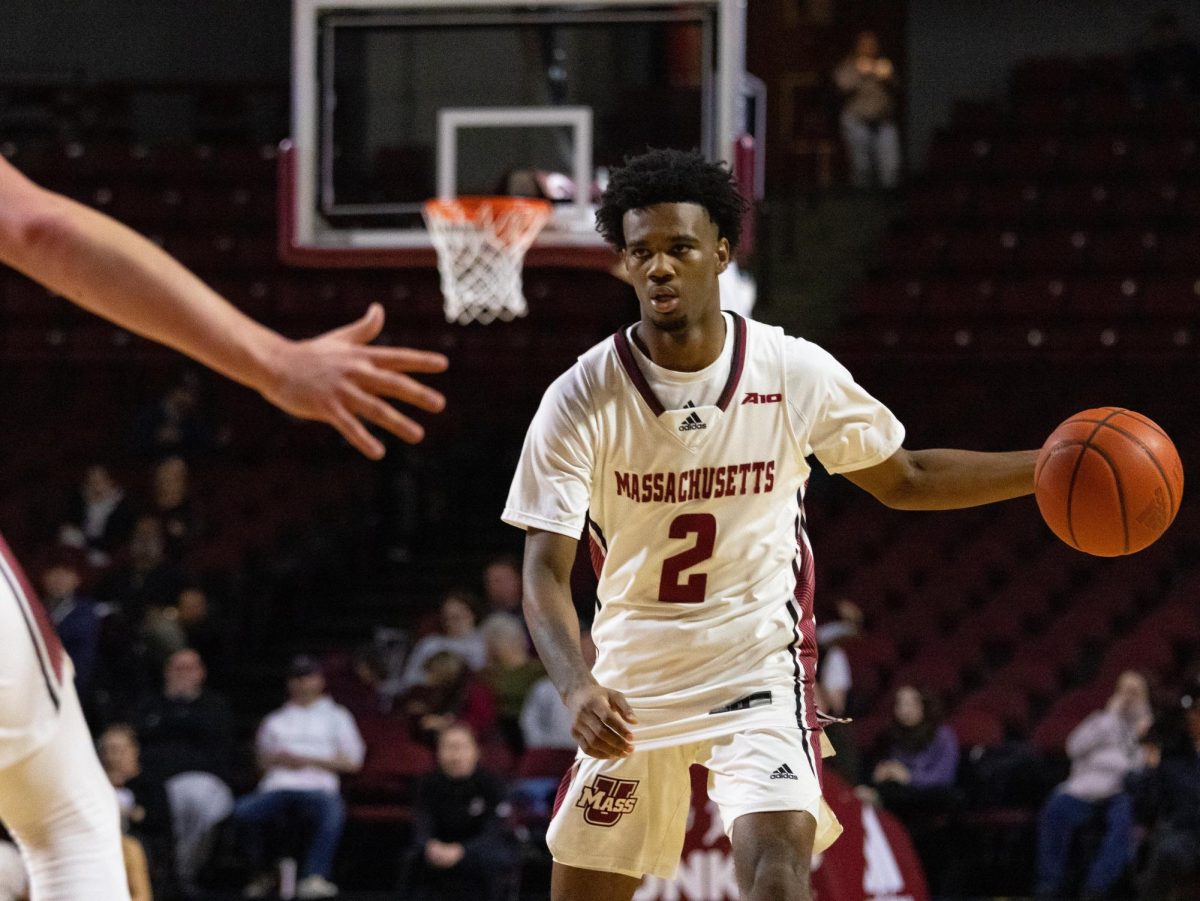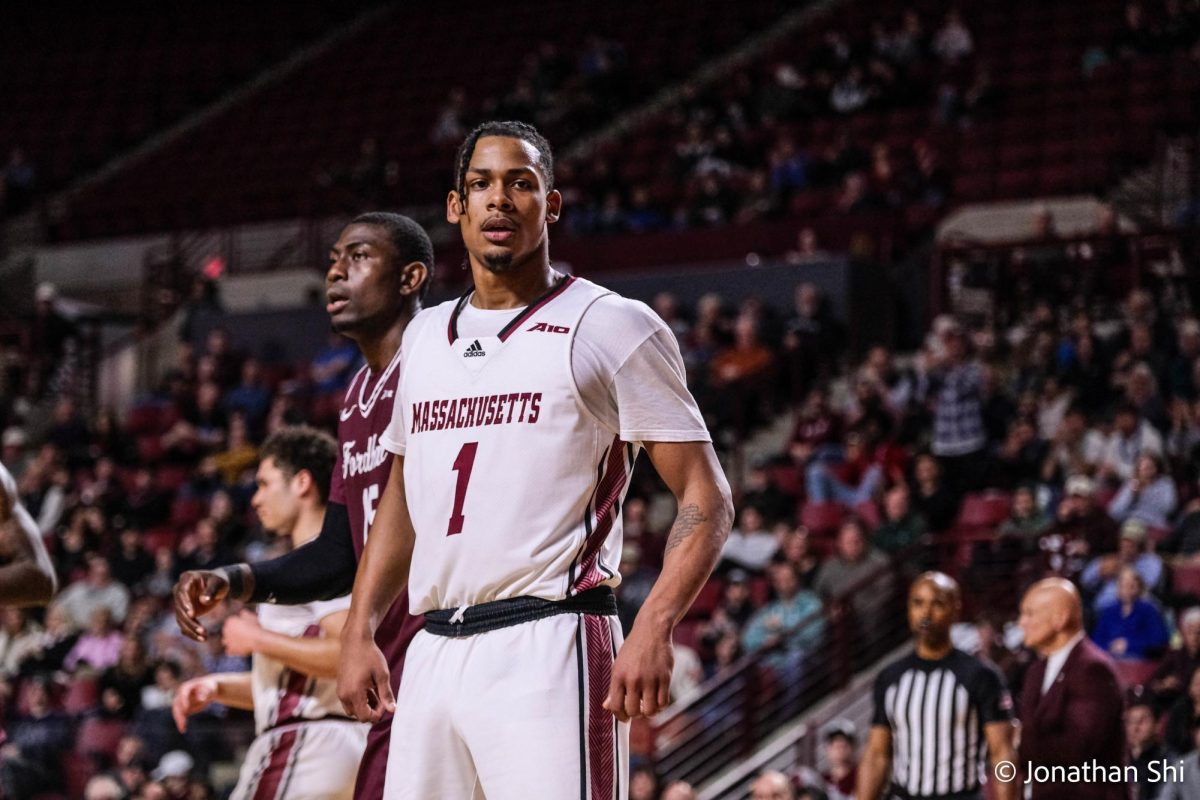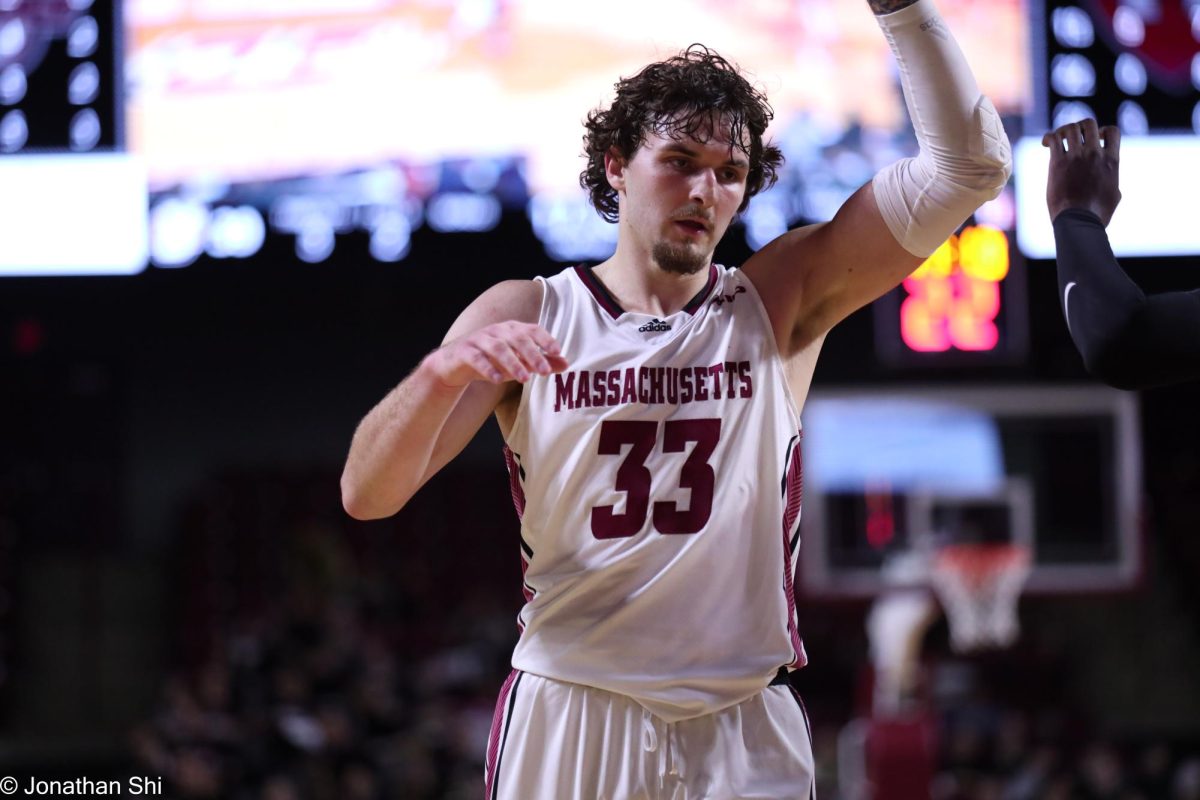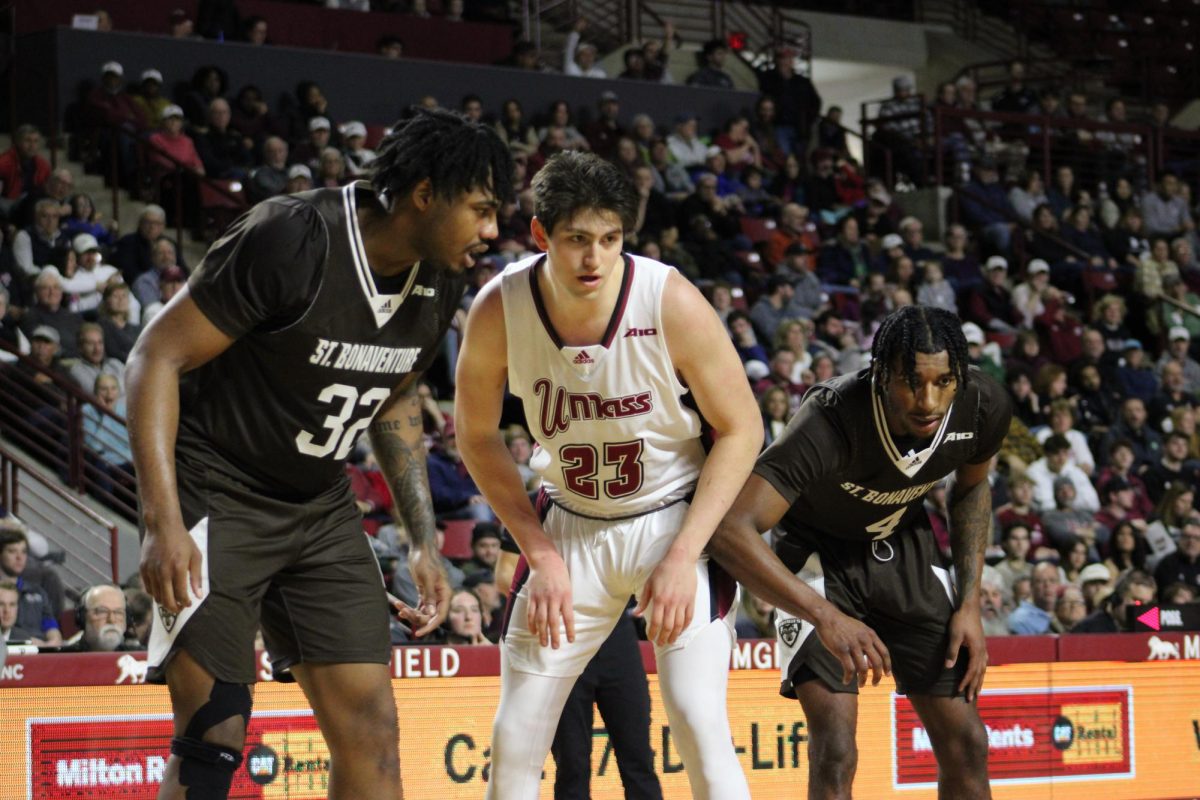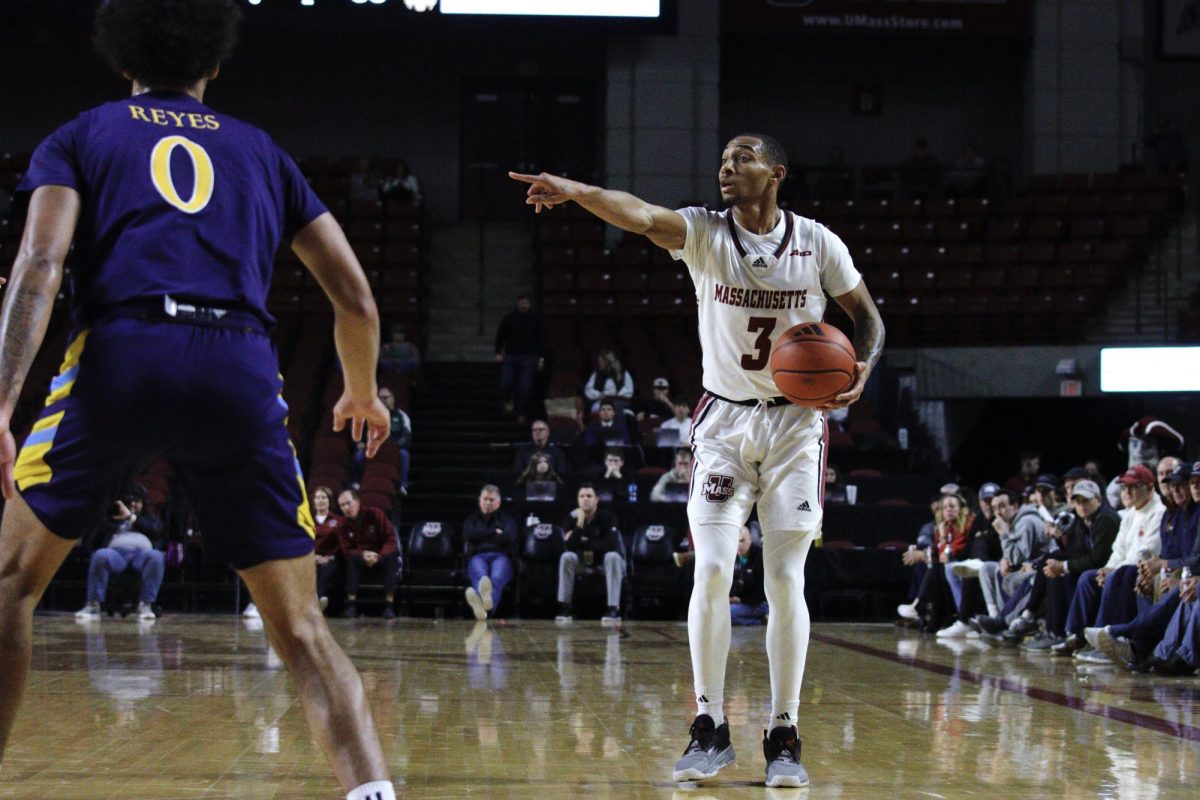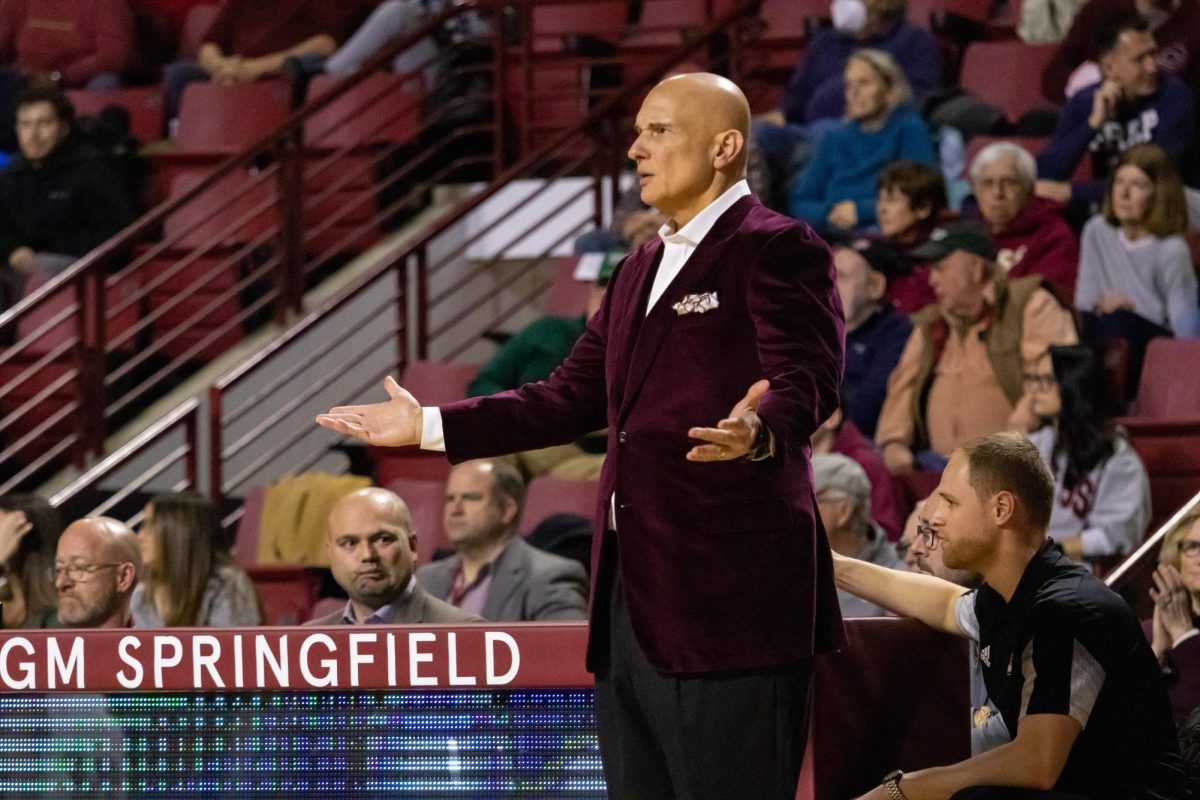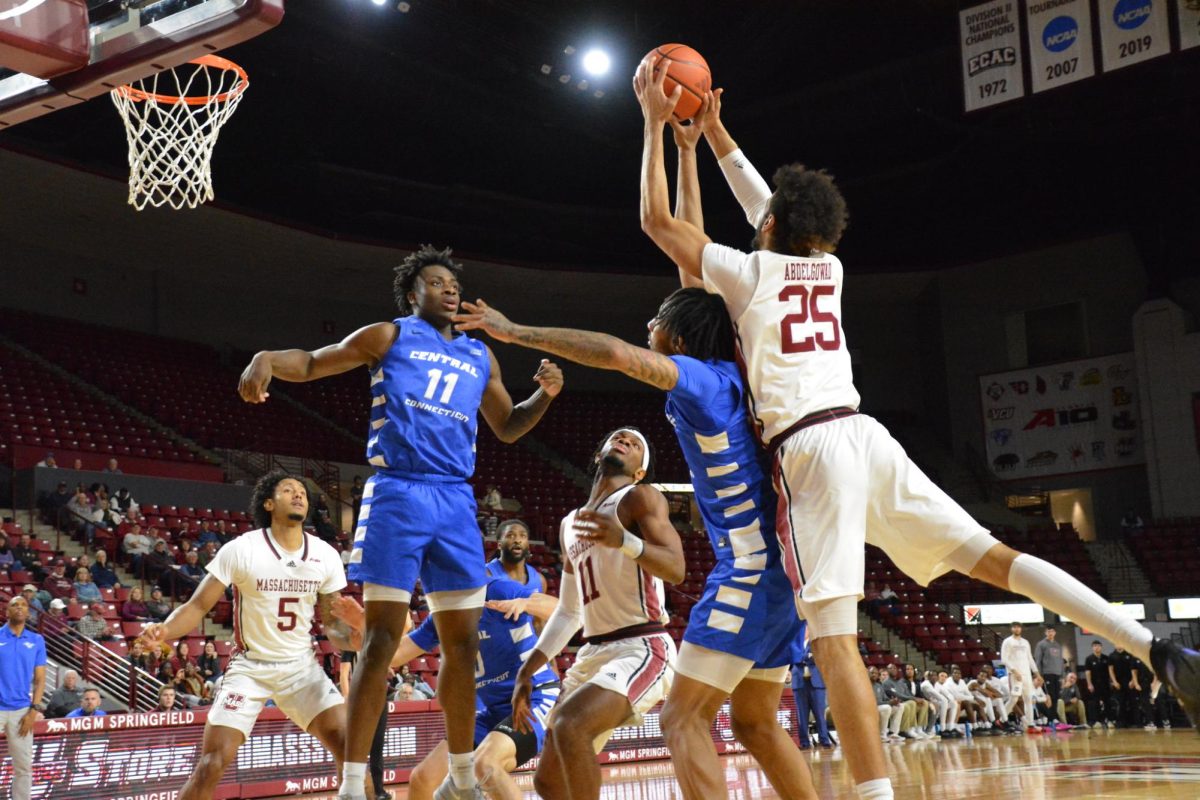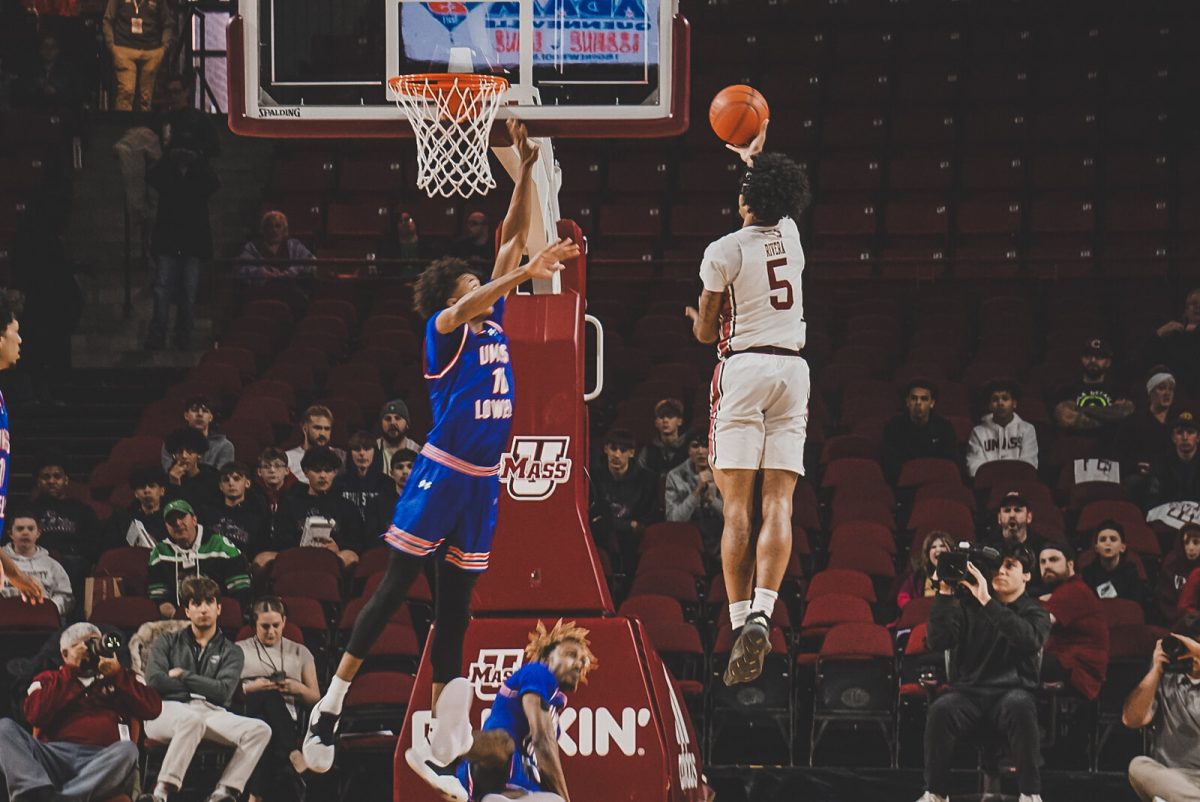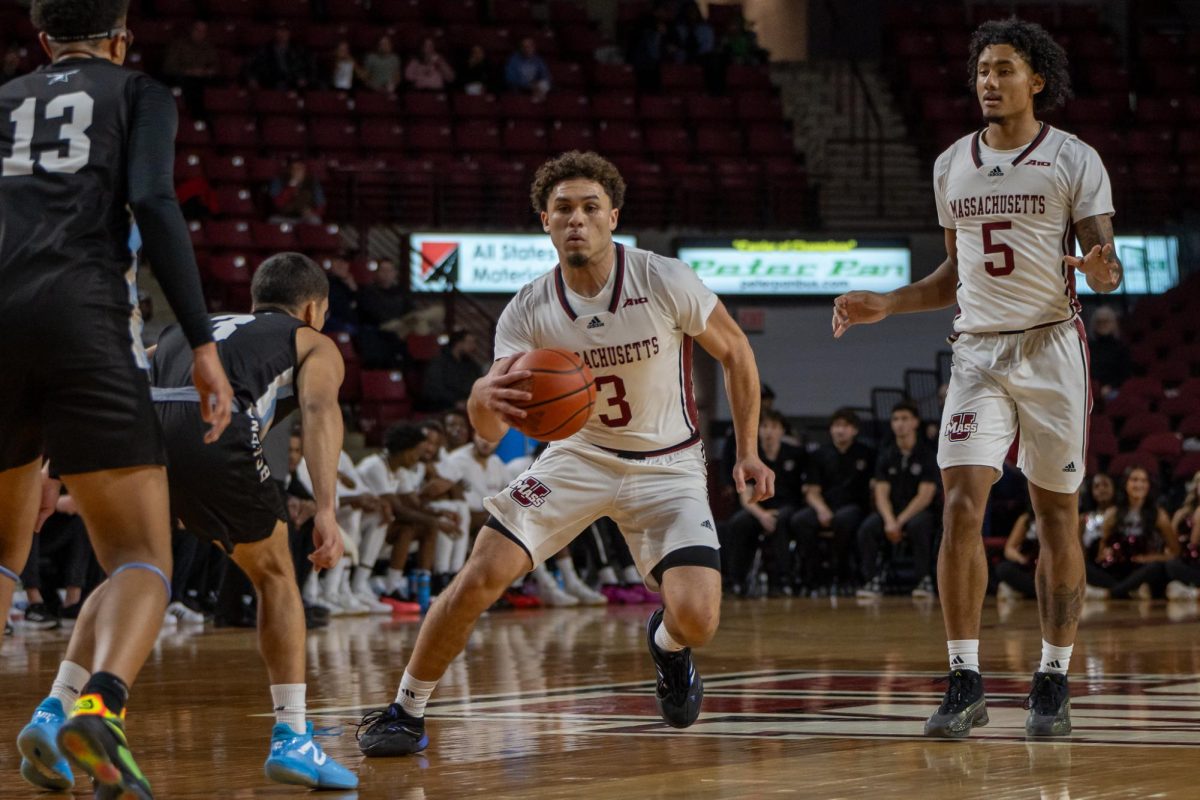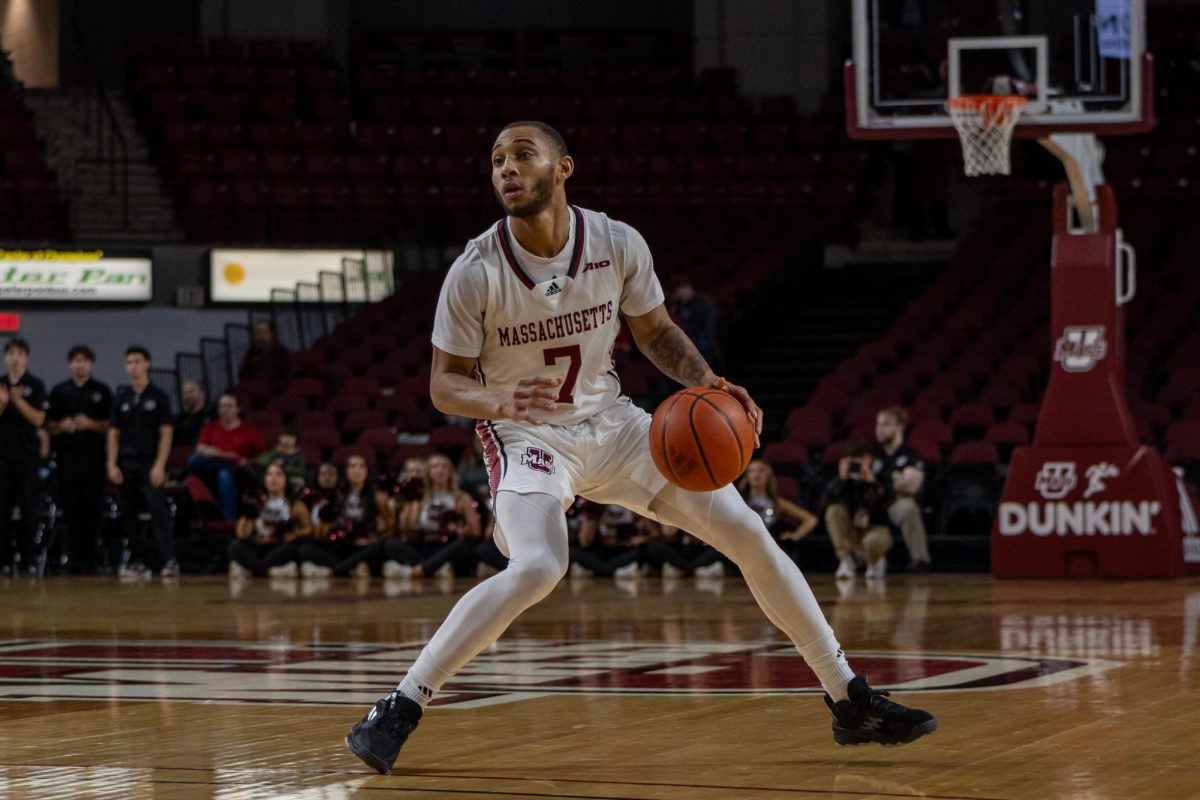Perhaps enough’s been written about the Massachusetts men’s basketball team’s 79-78 upset win over Providence on Friday, but I think there’s one more thing to address before the Temple game on Wednesday fully corners the attention, because it matters long term.
Carl Pierre’s shooting ability is no longer a secret. Part of the reason he hit 47 percent from 3-point range last season is that teams didn’t really know about him, and were so worried about Luwane Pipkins that they left him too many good looks (also, he’s a really good 3-point shooter, which is the other part).
Now, they know.
So the tricky thing for Matt McCall this season has just been getting Pierre open when every team has him underlined as a sniper on the scouting report — defenses key in on him now, and that’s been a problem.
Pierre’s shot 41 percent from deep this season; not a huge drop-off, but that’s a bit skewed by his Dunkin’ Donuts Center eruption, as he was shooting 36 percent coming in. For the most part, that’s just because he isn’t getting the same shots. Early in the season, he was forcing threes with a hand in his face, or trying to create shots off the dribble, which isn’t quite his game like it is Pipkins’ or Curtis Cobb’s.
Friday’s first half was more of the same. Ed Cooley and the Friars knew about Pierre, and ran him off the 3-point line early. Every time he caught the ball on the wing or in the corner there was a defender in his chest and playing him tight, with no room to rise up and fire a catch-and-shoot three.
Take this possession at the end of the first half, for example. You’ll see Pierre come underneath the basket and over to the right wing, and as soon as he catches it, Isaiah Jackson is above the 3-point line with a hand up. Even when the ball rotates back to Pierre late in the clock, same thing — Jackson’s heels are above the 3-point line, and he forces Pierre to drive.
In the second half, it was more of the same. A.J. Reeves is guarding Pierre in this clip, and as soon as the sophomore catches it, Reeves is already well above the 3-point line.
Even when Pipkins runs the pick-and-roll with Rashaan Holloway, and Holloway runs free into the paint with Kalif Young hedging hard, Reeves only pays him marginal attention; he’s worried about Pierre.
It’s been like that all season. Whoever draws Pierre as his assignment stays high when the ball is one pass away, and makes sure his heels are above the 3-point line with a hand up when Pierre gets a touch. He’s had to either drive or force a shot, and has struggled a bit with both.
But, of course, Pierre got hot in the second half. Here’s how.
Opponents are well set up by the time the Minutemen get into the half-court, and watch Pierre like hawks. But when Pipkins has a chance to push in transition, defenses have to pick up assignments on the fly, and that’s where Pierre can find pockets.
Take this clip of Pierre’s first make of the night — Pipkins grabs the rebound and takes off, and David Duke has to step up and stop the ball. Suddenly, Jackson has two assignments — Pierre and Keon Clergeot — and gets caught in two minds, unsure in that split second whether to cover Pierre or rotate to the corner. Amidst the chaos, Pierre gets his first open look of the evening, and it was the beginning of the end for Providence.
A minute later — Pierre had already hit his second three by this point — it was more of the same, as Pipkins took an outlet pass from Holloway and ran the fast break, eyeing Pierre on the right wing all the way. Jackson’s in a decent position and Pierre has to let it go from pretty deep, but the importance lies in the timing; Pierre has the inch he needs to catch and fire in one motion, and bring the Minutemen back into the game.
This last one is probably the most important. I unfortunately can only find the second half of the clip, but you’ll get the gist of it — just take my word for it that before Pipkins got into the lane at the start, he took another outlet pass and pushed it down the right side before driving to the hoop.
Pipkins got to the rim and drew attention, and as a result, no one was left to pick up Pierre. He caught it, set, and buried it, and the Minutemen were within one after going down 20.
Here’s what I’m getting at: defenses are going to do everything they can to make sure Pierre never sees an open look or a catch-and-shoot three, and as a result, it’s really difficult to get him super involved in the half-court. McCall mentioned on Friday that he’d been running actions to try and get Pierre the ball, but when teams see those actions and know they’re trying to get him around a screen for a catch-and-shoot look, they hedge screens and switch to make sure he can’t find an inch.
What’s the solution? Chaos.
“We’ve got to continue offensively to slice the floor and play fast and play in transition,” McCall said on Friday. “You know, I’m trying to run actions in the first half for Carl to get him shots, but sometimes teams are sitting on him, and the best way for him to get shots off is in transition.
“I thought the guards did a good job in the second half of slicing the floor and finding Carl.”
There are two situations where there’s consistently enough confusion that Pierre gets himself open: in transition, and when defenses collapse on drivers. So when Pipkins pushes the ball and guys are backpedaling and trying to pick up assignments in transition, Pierre can take advantage of the chaos and slip into spaces for open shots. Similarly, when guys like Pipkins or Tre Wood can beat a man or find some space in a pick and roll and defenders have to collapse or rotate, those spaces open up again.
I think one of the big concerns this season has been Pierre getting enough touches, and perhaps that’s fair — but they have to be the right touches. McCall can’t look at Pierre’s 3-point percentage and just force-feed him the ball, and that’s why he’s been smart about getting his best shooter the ball in the right ways.
When the ball hits the paint, as McCall likes to say, or when it’s pushed fast in transition, defenses break down and have to make split-second decisions — when that happens, all that’s left is for Carl Pierre to capitalize on the chaos.
And when he does, it’s a sight to see.
Amin Touri can be reached at [email protected] and followed on Twitter @Amin_Touri.

